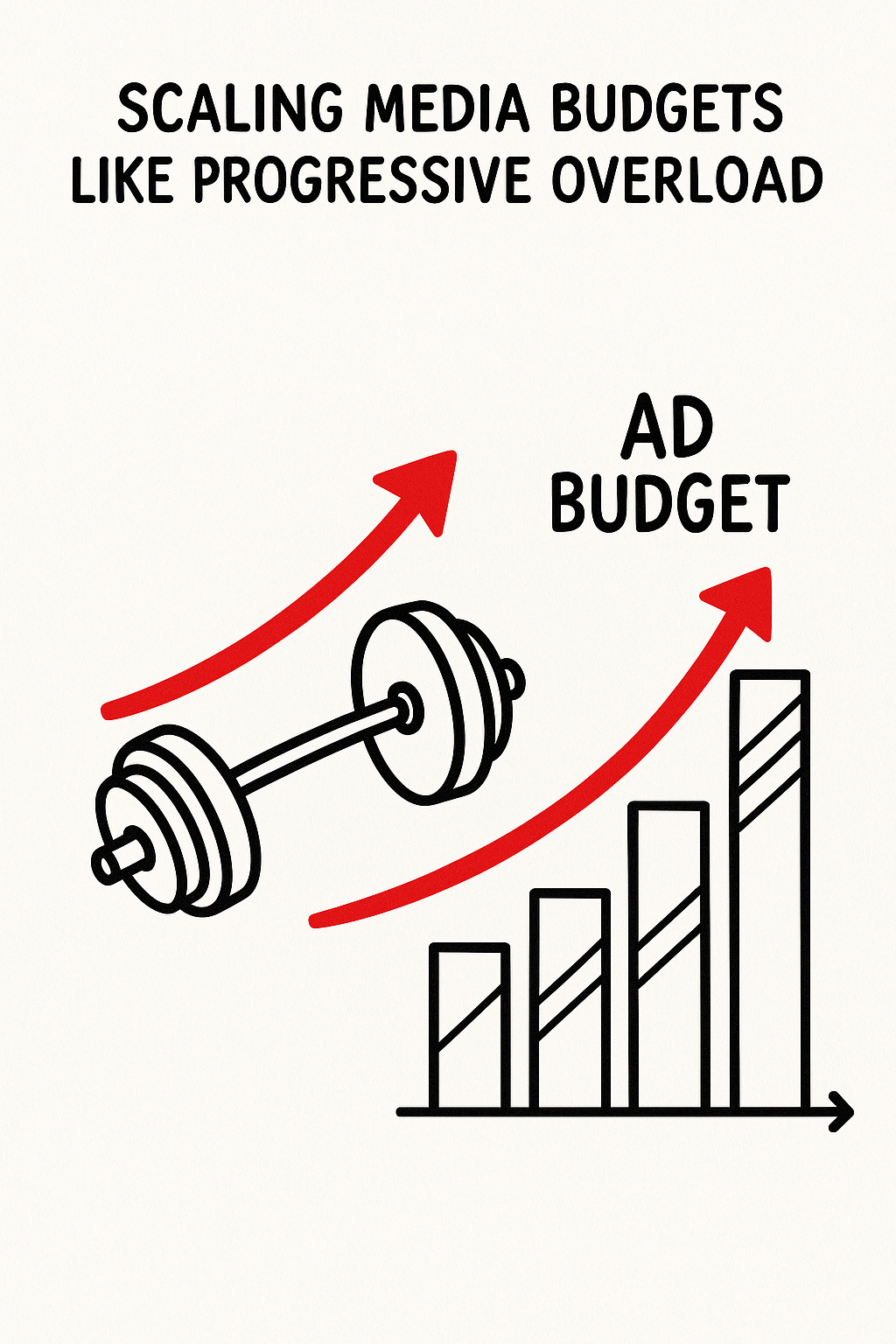Scaling Media Budgets Like Progressive Overload
Learn how progressive overload in fitness can transform your ad spend strategy—scale smarter, not faster, for sustainable marketing growth.
I’m a huge fan of the recently released *Physical: Asia.* While it’s disappointing that there were no representatives from Singapore, it was still a thrill to watch teams push their limits through sheer strength, endurance, and strategy.
The show also reminded me of something less cinematic: my own neglected strength routine. (I’ll admit it. My consistency dipped recently as we entered the -ber months.) When I finally got back under the barbell, the rust showed. My performance had slipped. And it hit me, strength training, much like media buying, punishes inconsistency and rewards progression.
Everyone understands the gym. You don’t walk in and max out every piece of equipment on day one. You’d either quit or get injured. Yet that’s precisely what most growth teams do with ad budgets. They find success at $1,000/month, panic that they’re “leaving money on the table,” and crank it up to $10,000 overnight, only to watch efficiency crater while their CFO demands answers.
The principle marketers should steal from fitness professionals is progressive overload: the systematic, incremental increase of stimulus to drive continuous adaptation and growth. The body doesn’t respond to chaos. Neither does the media ecosystem.
Small, deliberate increases in stimulus (your budget), paired with structured creative refreshes and rigorous measurement, unlock sustained ROI. Aggressive scaling, on the other hand, consistently destroys it.
1. Gradual Scaling of Ad Spend: The 10% Rule
In fitness, the Principle of Progression dictates that increases in weight, volume, or intensity should stay within 10% per week, enough to challenge the body without breaking it. Without this structure, you plateau or get injured.
Media budgets behave identically. Scale too fast and you trigger multiple problems:
The platform’s learning algorithm hasn’t stabilised.
Your audience reach lags behind your spend, creating overexposure.
Creative fatigues faster than the algorithm can optimise.
The result? Higher CPMs, lower CTRs, and a CFO quietly Googling “media audit.”
The smarter play is incremental scaling, e.g 10–15% weekly increases validated by data. This lets you:
Isolate cause and effect: When metrics shift, you know why.
Feed the algorithm properly: Give it consistent data, not chaos.
Map your true ceiling: Identify the point of diminishing returns before you hit it.
Think of it as compound interest for ad spend. A 10% weekly increase over eight weeks yields a 114% total lift without the burnout, waste, or algorithm confusion of a budget spike.
2. Avoiding Plateaus: The Adaptation Problem
Here’s where most scaling efforts fail: they treat creative as static.
In strength training, this is neural adaptation. The body stops responding to the same exercise. What once built muscle now just maintains it. Progress halts.
Advertising works the same way. Creative fatigue is neural adaptation at the campaign level. Audiences exposed to the same ad repeatedly tune out. CTR drops, CPA climbs, and performance tanks—not because of budget, but because the stimulus is stale.
So instead of cutting spending, refresh your creative.
Scale horizontally by increasing the budget on proven winners.
Scale vertically by testing new creative variations—angles, formats, psychological hooks.
Use periodisation, like elite athletes do:
Rotate creative “phases” every few weeks, from brand storytelling, education, to social proof.
Track frequency religiously: beyond 3 exposures (prospecting) or 5 (retargeting), fatigue accelerates.
Build weekly creative sprints, leveraging GenAI to multiply variations at speed.
With structure, creativity becomes your force multiplier. The best growth teams don’t just optimise bids, they optimise stimulus.
3. Tracking Performance Like Reps and Weights
A lifter who doesn’t log sets and reps isn’t training; they’re just moving weights.
Most marketers make the same mistake: glancing at dashboards like horoscopes, hoping for cosmic alignment. Real growth requires measurement discipline.
Your benchmarks are your barbell plates:
CTR: Measures creative relevance. Weekly tracking reveals fatigue trends.
CPA: The truth metric. Scaling only works if acquisition costs rise slower than spend.
CPM: The canary in the coal mine, if it climbs without results, your audience is saturated.
And like fitness tracking, context matters. Compare against a control group, not just absolute numbers. Incremental performance tells you what’s working, not what’s happening.
Finally, apply the concept of a deload week: a temporary reduction in volume to prevent overtraining. In marketing, that means throttling campaigns to let algorithms “recover.” Afterwards, performance often rebounds stronger.
Final Thoughts: Scaling media budgets isn’t a financial problem, it’s a stimulus-response problem
The fitness industry learned this the hard way: systems adapt to incremental stress, plateau under constant stress, and break under excessive stress. Media ecosystems are no different.
The playbook is simple, though few have the patience to follow it:
Scale gradually. 10–15% increments. Validate every move with clean data.
Refresh creatively. Rotate stimuli. Periodise your campaigns.
Measure religiously. Benchmark, compare, deload, repeat.
Most teams will chase shortcuts by scaling fast, burning faster, then blaming the algorithm. They’ll look busy but move nowhere.
The winners? The ones boring enough to scale carefully, disciplined enough to measure relentlessly, and creative enough to keep the stimulus novel. They’ll look slow. They’ll be the ones actually moving.
Now, if you’ll excuse me, I have some literal progressive overload to do, and maybe, one day, Singapore will finally make it onto Physical: Asia.

